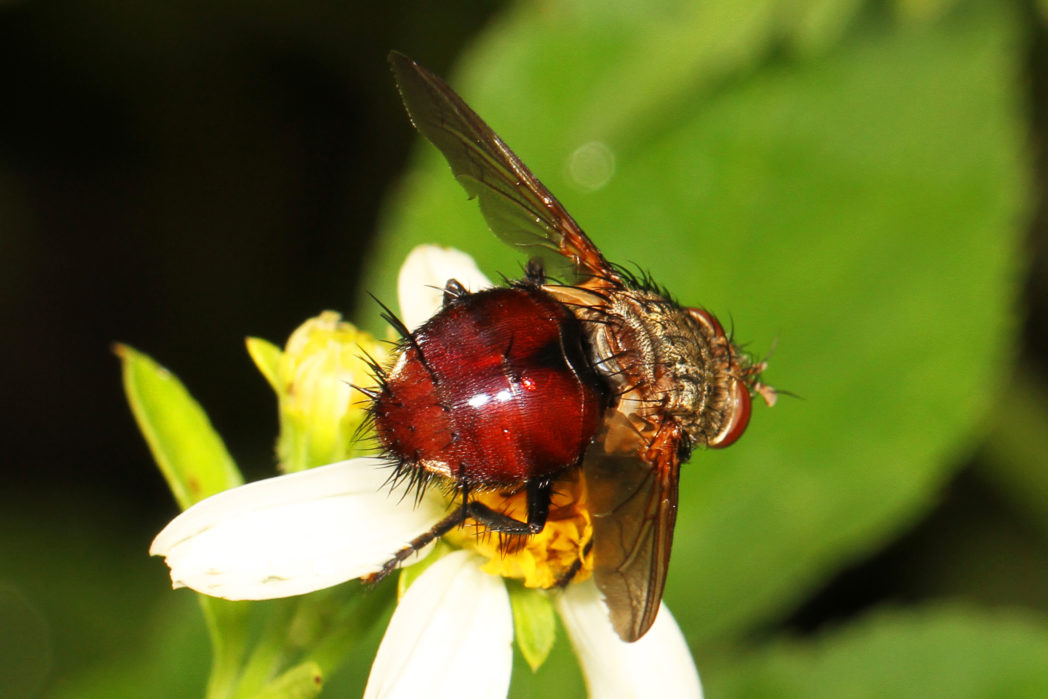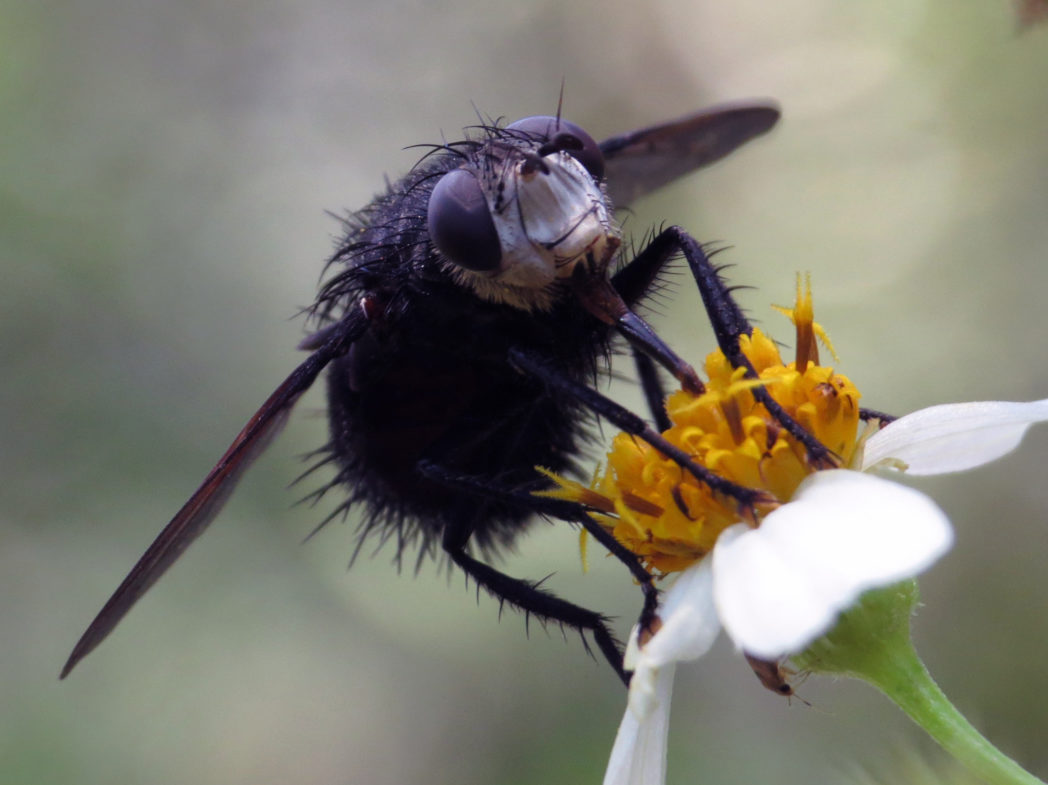Tachinid flies
by Jonnie Dietz, Florida Museum of Natural History
“Know your native pollinators” is a series of articles that will help you identify and appreciate Florida’s varied pollinators, including bees, wasps, butterflies, moths, beetles, flies, birds and bats. Pictured above: Tachinid slurping up nectar with its extended tongue. Photo by Jonnie Dietz.
Tachinid flies are often overlooked, but these hairy pollinators are beneficial garden visitors.
CLASSIFICATION
Order: Diptera
Family: Tachinidae
FORAGING PREFERENCES
Most flies are generalist foragers. They prefer disc- or bowl-shaped flowers, or shallow flowers with easily accessible nectar and pollen. Tachinids will forage on a wide range of flower types, but these three plant families are a great place to start:
- Asteraceae (Aster, daisy or sunflower family)
- Apiaceae (also Umbelliferae; Carrot or parsley family)
- Lamiaceae (Mint family)
ABOUT
With over 1,300 species in North America alone, Tachinid flies are an extremely diverse group. They are often robust in size (up to ¾-inch long), and vary in color from drab brown or yellow, to flashy iridescent blue. The most conspicuous Tachinids have spiny bodies. Their bristly hairs can be quite long and dense, especially on the fly’s abdomen.

Spines line the abdominal segments on this Tachinid. Photo by Judy Gallagher (CC BY 2.0)
Adults
Adults visit flowers to feed on nectar (some also ingest pollen), making Tachinids good pollinators. As they fly from flower to flower in search of food, pollen collects on their tongues, legs and bodies. Like most flies, Tachinids typically have short mouthparts that end in a sponge-like pad, restricting them to flowers with easily accessible nectar and pollen. They tend to be generalists and are not fussy about which flowers they visit. In addition to nectar, adult Tachinids regularly sop up tree sap or honeydew excreted by aphids and scale insects.
Tachinids are often overlooked in the garden, but keep your eyes peeled on flowers and foliage. Once you spot one, you’re likely to start recognizing them everywhere!
Larvae
Adult Tachinids are arguably grotesque looking with their spiny bodies, but they really up their “creep-factor” in the larval stage. Nearly all Tachinid fly larvae are known to be parasitoids of other insects (caterpillars being a particular favorite), but how they enter their host varies.
Some adult females will lay their eggs directly on (or in) a host. Others will lay eggs on a leaf, which only hatch if consumed by a hungry caterpillar munching on the foliage. Other Tachinid larvae will lie in wait, or even actively stalk their host.
Once inside, all Tachinid larvae begin to consume their host internally. These body invaders avoid eating their host’s vital organs until the last stage of their development, allowing the host live and grow… for a while, anyway.
Their life cycle may sound like a Halloween horror story, but Tachinid larvae are great at keeping plant pests in check. Tachinids will parasitize beetle larvae (such as Japanese, potato and cucumber beetles), cabbageworms and gypsy moths, sawfly larvae, grasshoppers and other true bugs like squash bugs and plant bugs.
References:
- Cloyd, Raymond. Eaton, Eric R., and Kenn Kaufman. Kaufman Field Guide to Insects of North America. Houghton Mifflin Co., 2007.
- Lee-Mäder Eric. Attracting Native Pollinators: Protecting North Americas Bees and Butterflies: the Xerces Society Guide. Storey Pub., 2011.
- Mahr, Susan. “Tachinid Flies.” Master Gardener Program, University of Wisconsin-Extension, 15 Oct. 2007, wimastergardener.org/article/tachinid-flies/.

